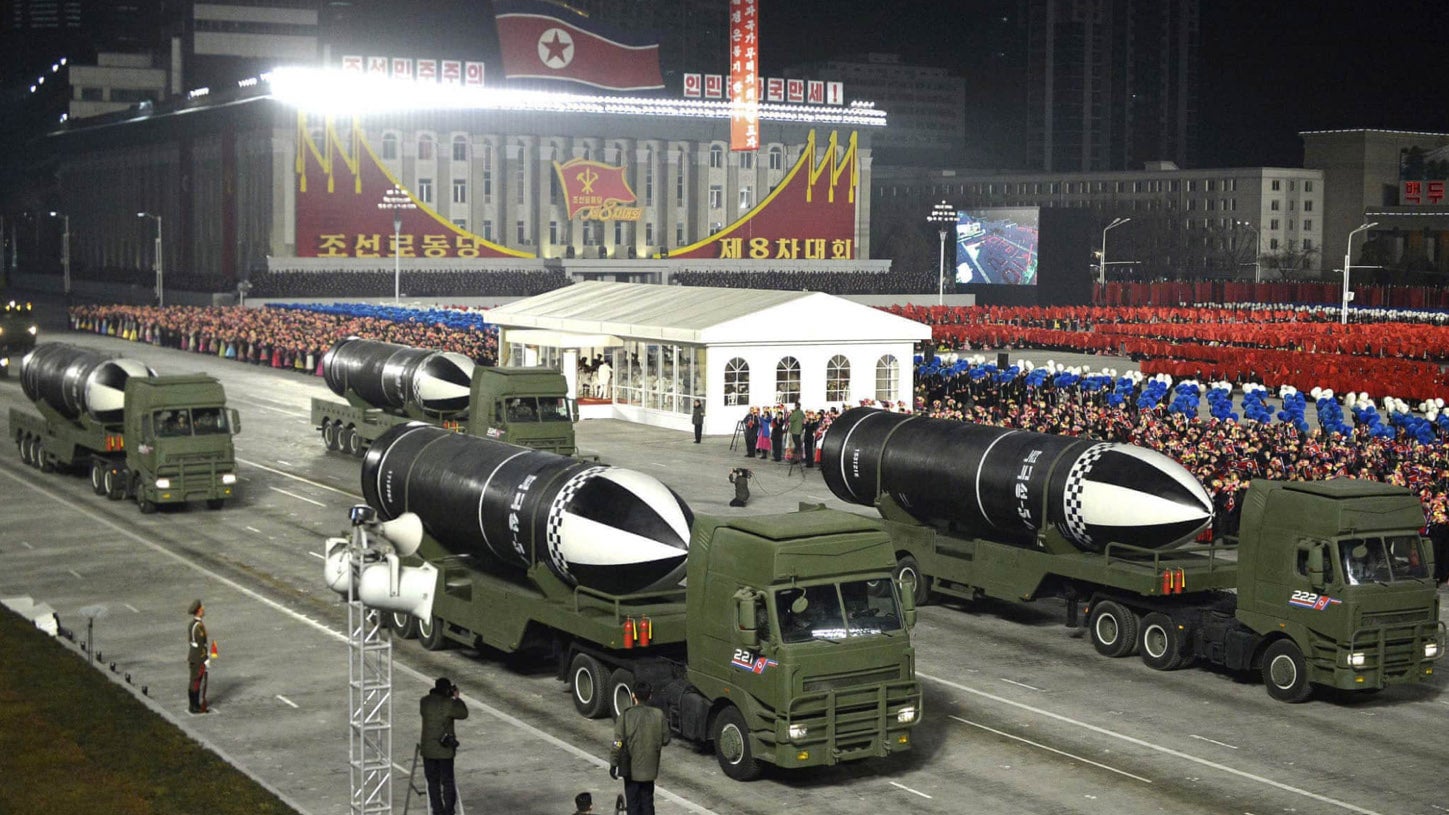Right on cue, after declaring the United States its biggest threat and announcing it was preparing for a new round of weapons tests, North Korea presented several examples of an apparently new submarine-launched ballistic missile (SLBM) during a parade in its capital, Pyongyang. The missiles and various other weapons rolled through Kim Il Sung Square under the gaze of the country’s leader Kim Jong Un as part of North’s Korea’s latest grand propaganda display of its growing military might.
The missile is identified as the Pukguksong-5. At least four examples of the new weapon were on display transported on flatbed trucks. Though it’s not clear if these were mockups or not, the design looks to be a further development of the previous Pukguksong-3 and 4 missiles.
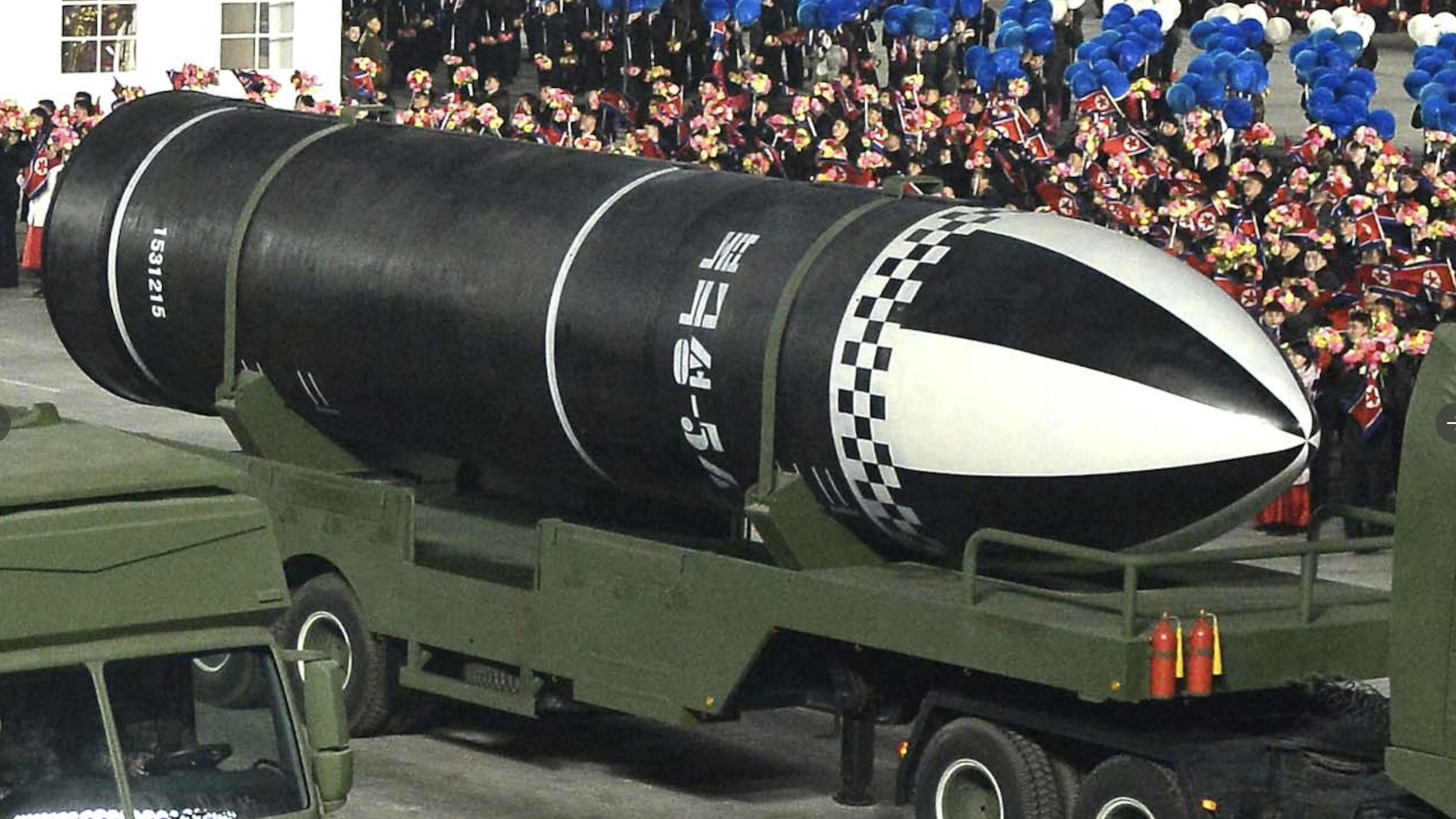
North Korea first publicly revealed the Pukguksong-4 in October 2020 and there’s no indication that it has actually been test-fired yet. In October 2019, North Korea did announce that it had conducted a test launch of the Pukguksong-3, the country’s largest solid-fuel ballistic missile at that time, but this was from a submerged platform at sea rather than a submarine.
There are some indications that the Pukguksong-5 is longer than the Pukguksong-4, possibly due to a revised nose section. It is also possible that the new weapon is somewhat wider than its predecessor, based on a rough visual comparison.
The Pukguksong-3, 4, and now 5, are all substantially larger than the Pukguksong-1 SLBM and its ground-launched derivative, the Pukguksong-2. All of the ballistic missiles in the Pukguksong series are solid-fuel types, compared to the Hwasong series of liquid-fueled ballistic missiles, which includes the Hwasong 15 and 16 intercontinental ballistic missiles (ICBM).
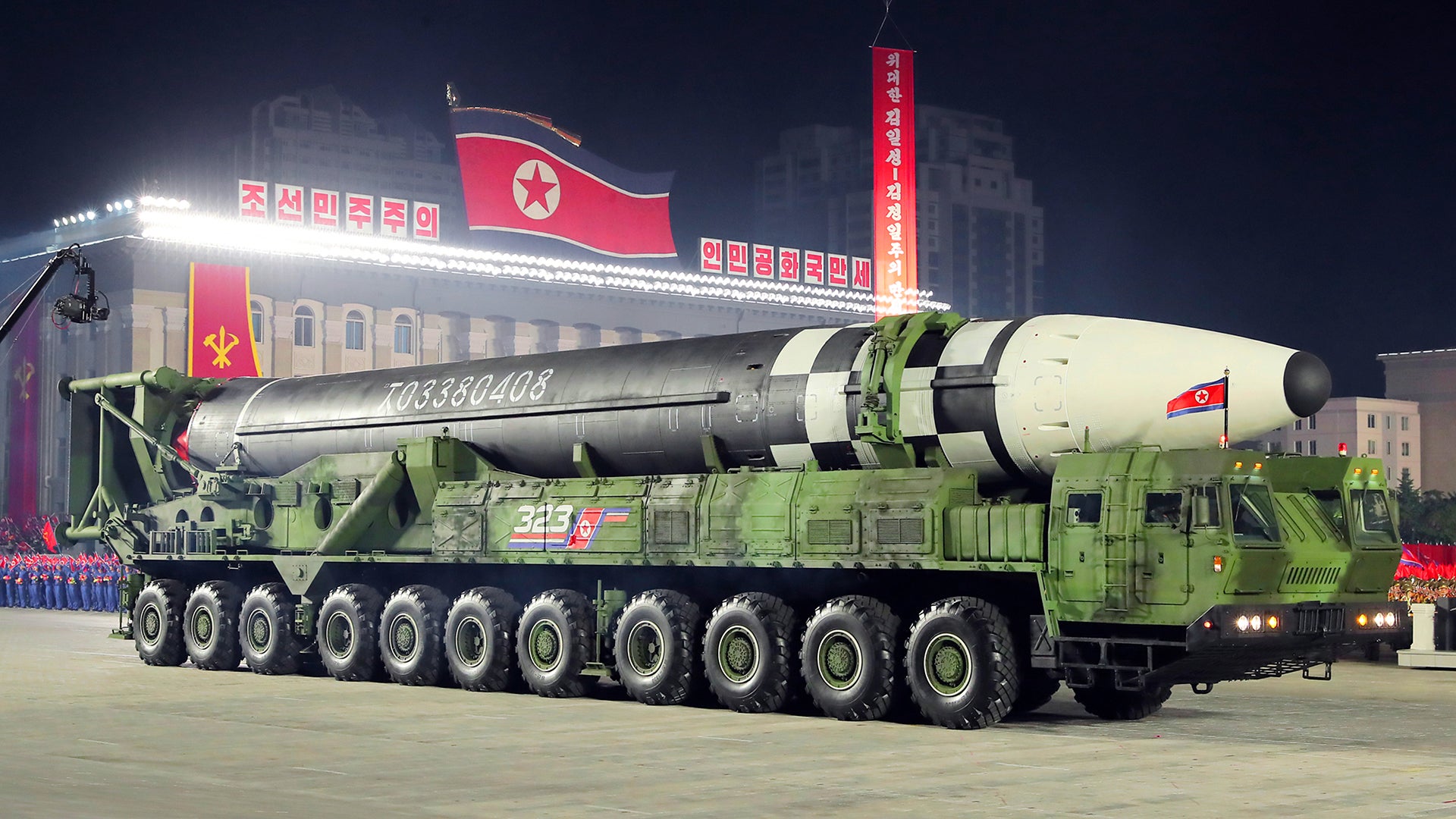
As The War Zone has discussed in the past, solid-fuel missiles mark a major advance for North Korea over its previous liquid-fuel technology. Not only are solid-fuel missiles much quicker to bring into action, as they do not require complex fueling preparations, but they are essentially a prerequisite for a safe and reliable submarine-launched ballistic missile capability. The tight confines of a submarine do not lend themselves to storing and pumping liquid rocket fuel into missiles and it would be an especially risky proposition in general given the volatile and corrosive nature of the propellant.
While North Korea has been actively engaged in the development of SLBMs for some years now, the program to field a practical operational weapon that can be launched from a submerged submarine has had only limited success. To date, the Pukguksong-1 is the only missile North Korea is known to have actually fired from a submarine.
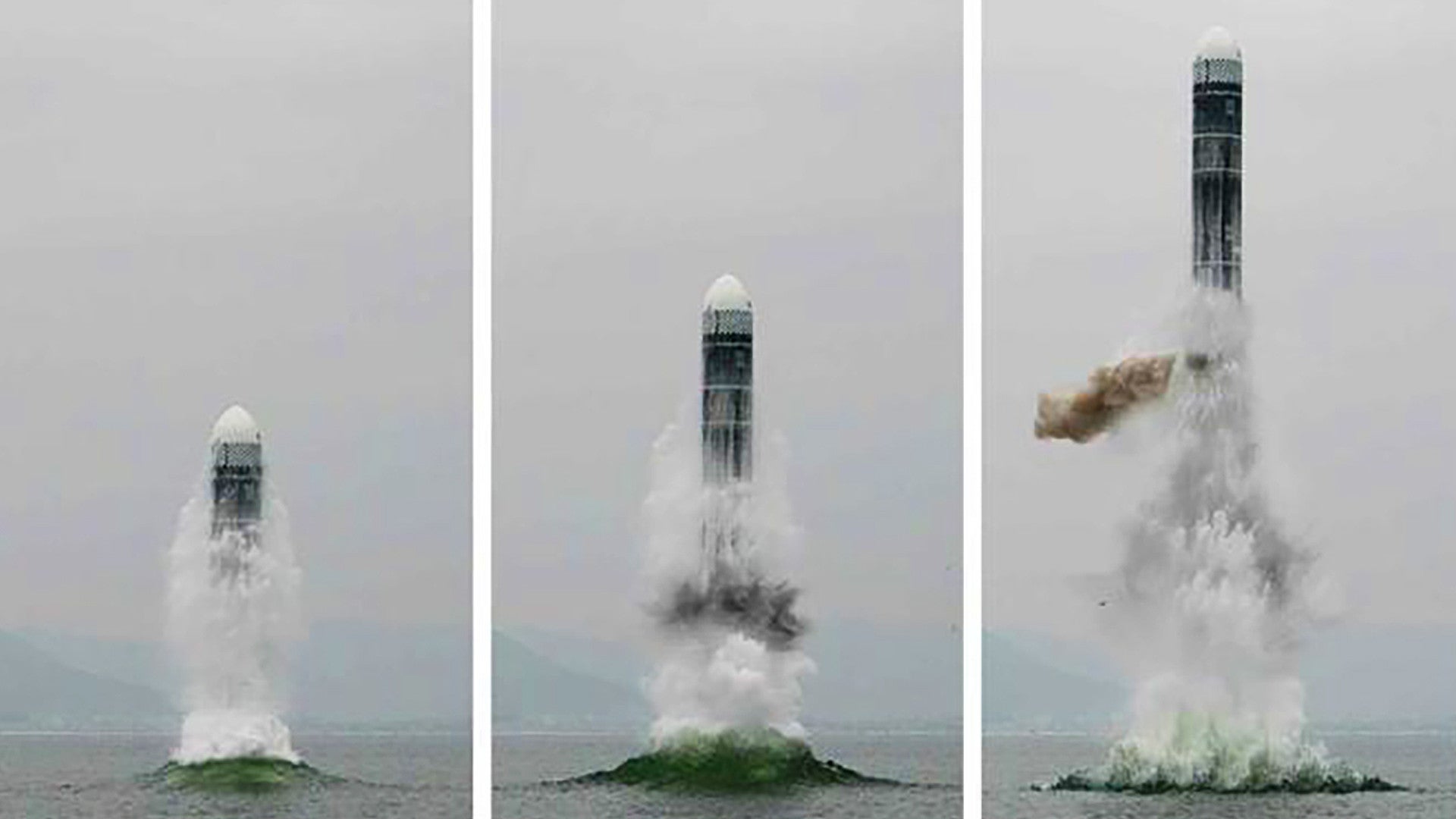
However, it is clear that Pyongyang is continuing to push ahead with its SLBM plans, including a project to convert an old Soviet-era Romeo class diesel electric attack submarine into a platform capable of launching ballistic missiles. This would seem to be part of a broader effort to develop a submarine-borne second-strike nuclear deterrent.
The Korean Central News Agency described the new SLBM as the “world’s mightiest,” adding that some of the missiles on show in the parade could be used to “pre-emptively and completely destroy any enemy outside of our territory” — making clear that the Pukguksong-5 is intended to be a strategic weapon system. This would be in line with other North Korean ballistic missile efforts in recent years, including ICBMs that could be fired at targets well beyond the countries immediate neighbors, including potentially in the United States. Examples of any of the country’s ICBM designs were notably absent from this most recent parade.
Meanwhile, the unveiling of this latest SLBM came only days after Kim Jong Un announced that the country would further expand North Korea’s nuclear weapons program and boost its overall military capabilities, outlining plans to field long-range ballistic missiles capable of being launched from land or sea and “super-large warheads.”
During the country’s latest Workers’ Party Congress, which lasted eight days and concluded on January 12, Kim had also said that the United States was its “biggest enemy,” noting that North Korea’s ongoing efforts to increase its military capabilities are necessary to defend itself against a possible U.S. invasion.
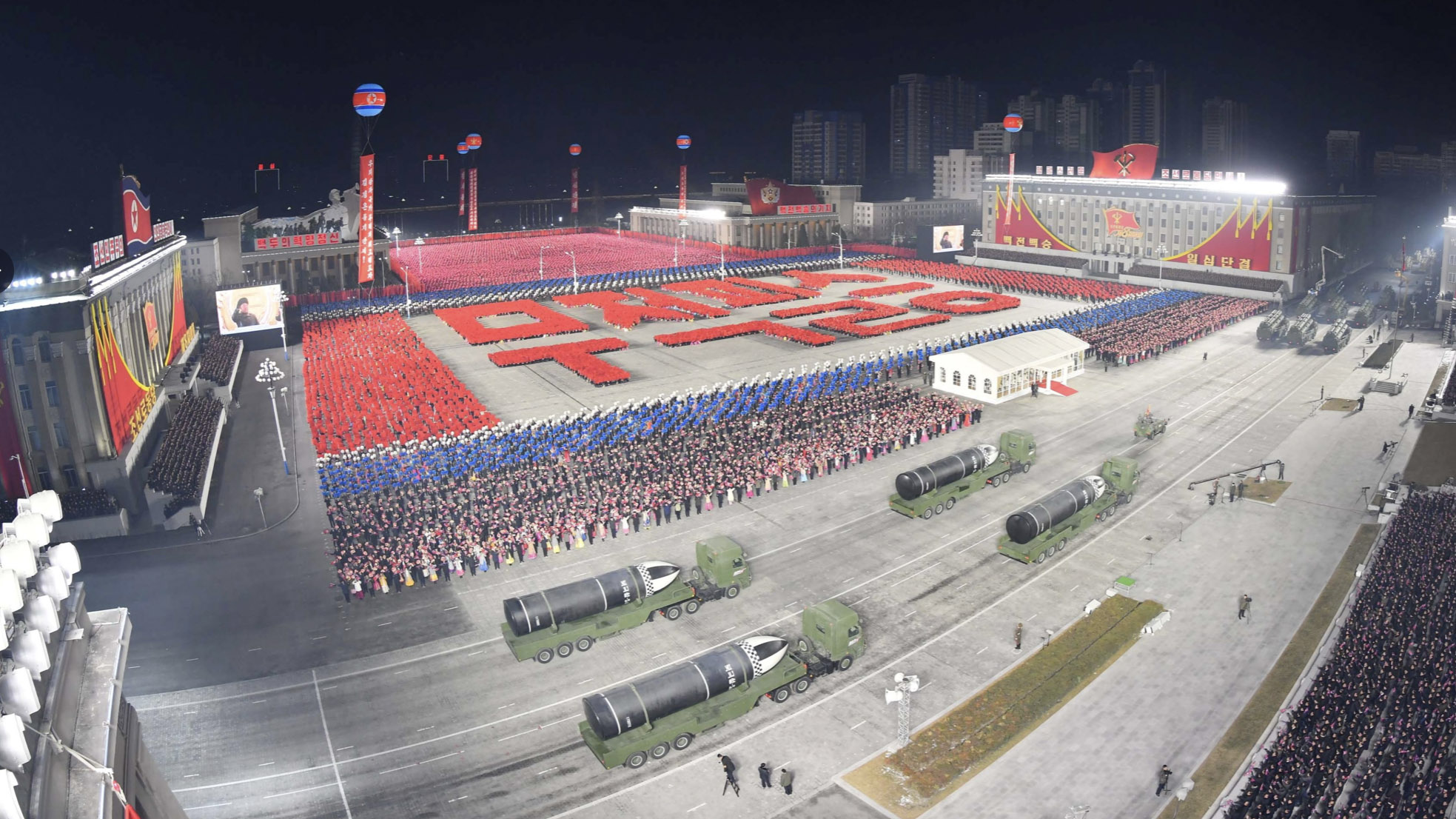
During the party congress, Kim claimed that the country has been developing a range of other sophisticated weapons, too, among them new tactical nuclear weapons, surveillance satellites, and hypersonic weapons. However, most relevant to the Pukguksong-5 SLBM is the reported work on a new nuclear-powered submarine that could be capable of carrying SLBMs.
How realistic this project or any of the other aspirations are, remains extremely questionable, at best, but a nuclear ballistic missile submarine would clearly represent a huge advance over previous North Korea submarine programs. In the meantime, an operational version of the new Pukguksong-5 could perhaps be carried by the modified Romeo, work on which appears to still be ongoing. However, as already noted, it, as well as the Pukguksong-3 and 4, is notably larger than Pukguksong-1. It’s not clear if there would be adequate space inside a Romeo-based hullform to accommodate any of these bigger weapons, which could drive the need for an entirely new, larger submarine design.
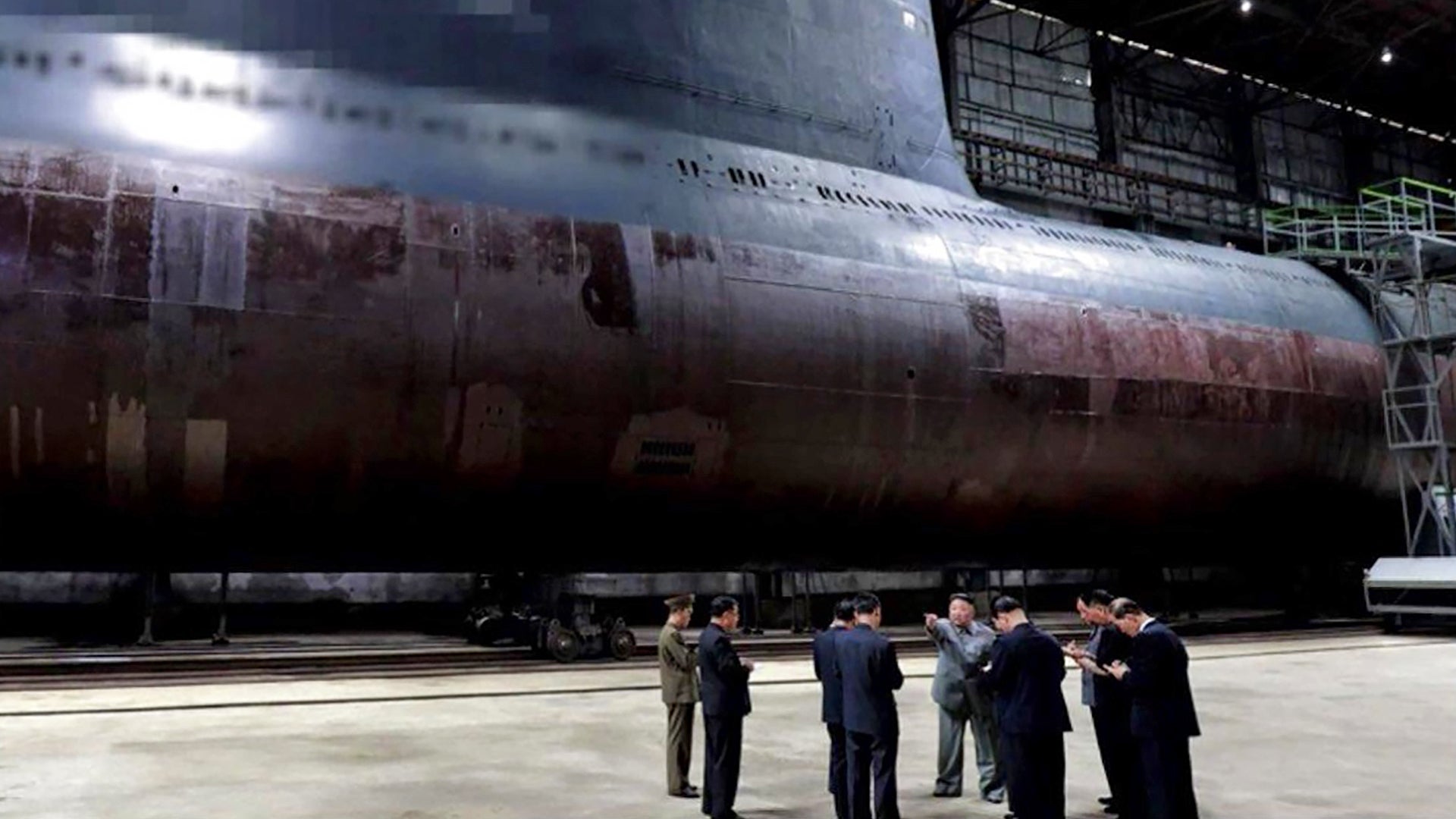
Whether or not the Pukguksong-5 can be accommodated within the confines of an existing, or adapted, submarine design may be academic, however. There is a good chance that the missile may find itself modified for land-based use as well. This would follow the same pattern as the previous Pukguksong-2, which became the KN-15. In this way, North Korea can continue to build up a force of land-based medium-range ballistic missiles and intermediate-range ballistic missiles (MRBMs and IRBMs). A land-based derivative of the Pukguksong-5 would, of course, retain the advantages inherent in its solid-fuel propulsion, above all its capacity for rapid launch.
Beyond matters of practical weaponeering, all of these newly announced developments seem, at least in part, to be about applying pressure to the incoming Biden Administration in the United States, as well as signaling North Korea’s military might to South Korea. In the past, Biden has labeled the North Korean leader a “thug” and has been critical of President Trump’s approach to limiting North Korea’s nuclear capabilities. Bill Burns, Biden’s pick for the next head of the Central Intelligence Agency, has also been outspoken in his condemnation of Trump’s handling of North Korea, in particular.
For his part, Kim has not ruled out further talks with the United States, but has called for Washington to abandon its hostile policy toward Pyongyang. During the Party Congress, he said that “no matter who is in power [in Washington], the true nature of its policy against North Korea will never change.”
On the other hand, North Korea’s stance on South Korea is as hardline as ever, officials taking the opportunity of the Party Congress to slam their neighbor for its alleged “misbehavior.”
With all this in mind, it is anyone’s guess how relations between the Biden administration and Kim’s “Hermit Kingdom” will play out, but it seems more than likely that we should expect to see further progress made by North Korea’s nuclear and long-range missile programs, whatever happens.
Contact the author: thomas@thedrive.com
